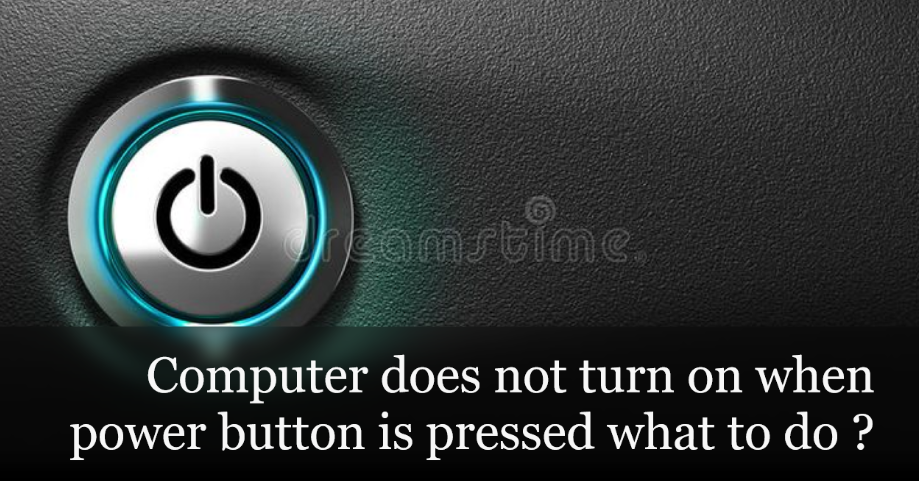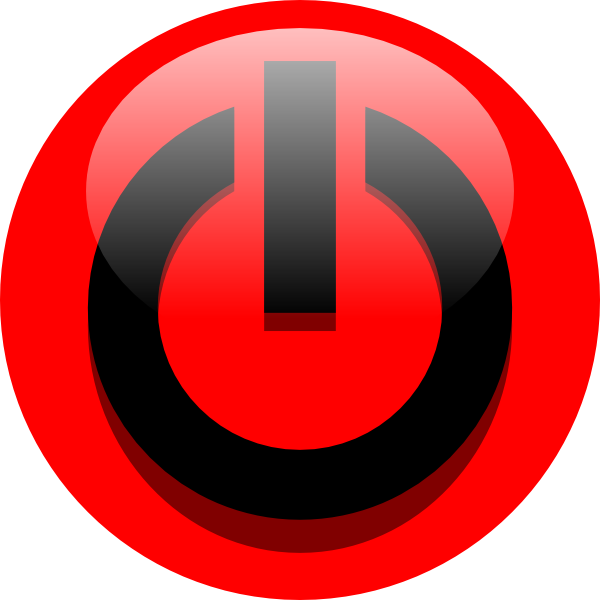The power button is a round or square button used to turn an electronic device on and off. Almost all electronic devices have a power button or power switch. Typically, the device turns on when a user presses a button and turns off when they press it again.
A hard power button is mechanical – you can feel a click when pressed and usually notice a difference in depth when the switch is on and when it’s not. A soft power button, which is much more common, is electrical and looks the same when the device is turned on and off.
Some older devices have a power switch that performs the same function as a hard power button. A flip of the switch in one direction turns the device on, and a flip in the other direction turns it off.
Where is the power button in the computer ?
Power buttons are on all types of computers, such as desktops, tablets, netbooks, laptops, etc. On mobile devices, they are usually on the side or top of the device, or sometimes next to the keyboard.
In a typical desktop computer setup, the power button and switch appear on the front and sometimes the back of the monitor, and the front and back of the case. The power switch on the back of the case is actually for the power supply installed in the computer.
How does the on/off power button icon (I&O) appear ?
Power buttons and switches are usually labeled with “I” and “O” symbols.
- The “I” represents power.
- “O” represents power off.
This designation is sometimes followed by I/O or the “I” and “O” characters. We can show you through pictures.
What to do if the computer does not turn on when the power button is pressed ?
Of the many ways a computer won’t turn on, a complete loss of power is rarely the worst case scenario. Your PC is not getting power due to a serious problem, but it is not likely.
There can be many possible reasons why a desktop, laptop or tablet computer like Surface Pro won’t turn on so it is very important that you go through a thorough troubleshooting procedure as we outlined below.
- Difficulty : Average
- Time Required : Anywhere from minutes to hours, depending on why the computer is not getting power
- What you’ll need : Your AC adapter if you’re troubleshooting a tablet or laptop, and possibly a screwdriver if you’re working on a desktop.
- Believe it or not, the very first reason a computer won’t turn on is because it won’t turn on.
Note – Before starting the sometimes time-consuming troubleshooting process, make sure that you have turned on every power switch and power button included in your computer system.
- Check the disconnected computer power cable connection. A loose or unplugged power cable is one of the top reasons why a computer won’t turn on.
- Plug your tablet, laptop, or desktop directly into the wall if it isn’t already. In other words, remove any power strips, battery backups, or other power distribution devices between your PC and the wall outlet.
Note – If your computer starts working after doing this, it means that something you have removed from the equation is causing the problem, so you need to replace your surge protector or other power distribution device. Might be possible. May need it. Even if nothing improves, continue to troubleshoot with the computer mounted in the wall to keep things simple.
- Perform a “lamp test” to verify that power is being provided from the wall. If your computer is not receiving power it will not turn on, so you need to make sure that the power source is working properly.
- Verify that the power supply voltage switch is set correctly if you are on the desktop. If the input voltage for the power supply unit (PSU) does not match the correct setting for your country, your computer may not turn on at all.
- Remove the main battery in the laptop or tablet and try to use AC power only. Yes, it’s perfectly fine to run your portable computer without a battery.
Note – If your computer restarts after doing this, it means that your battery is the cause of the problem and you should replace it. Unless you’re replacing it, feel free to use your computer as long as you’re close to an electrical outlet!
- Carefully inspect the power receptacle on the laptop or tablet for damage. Check for broken/bent pins and pieces of debris that could be preventing the computer from receiving power and charging the battery.
- Replace the computer’s power cable or AC adapter. On desktops, this is the power cable that runs between the computer case and the power source. An AC adapter for a tablet or laptop is a cable you plug into the wall to charge your battery (it usually has a small light on it).
Note – A common reason for tablets and laptops not turning on at all is a bad AC adapter. Even if you don’t use the power cable regularly, if it has failed, it means it is not charging your battery.
- Replace the CMOS battery, especially if your computer is more than a few years old or has been turned off for a long time or the main battery has been removed. Believe it or not, a bad CMOS battery is a relatively common reason why a computer does not receive power.
A new CMOS battery will cost you less than $10 USD and can be picked up at any battery store.
- Make sure the power switch is connected to the motherboard if you are using a desktop. This is not a very common point of failure, but your PC may not turn on because the power button is not properly connected to the motherboard.


